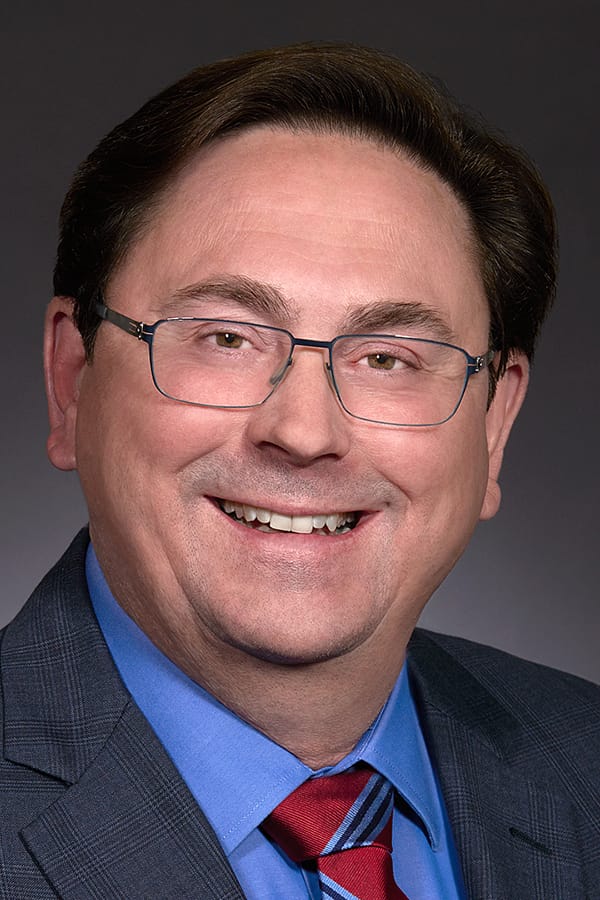AZUSA, Calif. –
- Nearly $12 million total donated to new Science Center
- Photos Available: Construction, students touring science center construction
Azusa Pacific University received the largest donation in the university’s history, announced President Jon R. Wallace, DBA. The $7.5 million gift was one of three totaling $11.2 million from friends of the university—unnamed at this time—followed by a $750,000 gift from the Los Angeles-based Fletcher Jones Foundation, which will support construction of the university's new science center.
The combined gifts total nearly $12 million. To date, almost $13.5 million has been raised toward the science center.
"The forthcoming science center represents Azusa Pacific's commitment to transformational scholarship, as well as a pledge to provide the best resources to students and to impact the regional and national community," said Wallace.
The New Science Center
As the most fiscally significant project undertaken by the university, the new $54.7 million science center reflects APU's commitment to educating more graduates majoring in the sciences and providing excellent resources to non-science majors as part of the general curriculum.
"These significant gifts take the university one step further toward our goals to serve our math and science majors and attract the best future teachers, researchers, and innovators," said David Bixby, Ed.D., executive vice president. "Through this support, we can broaden our ability to attain research funding, increase partnerships with local schools, and model environmental stewardship."
When complete, the three-story, 70,000-square foot facility will include a 90-seat lecture hall, 23 discipline-specific classrooms, 3 general-purpose classrooms, 37 teaching and research laboratories, faculty offices, student study and community areas, and APU’s Center for Research in Science. Additional features include NMR (nuclear magnetic resonance) and electron microscope rooms, an ecology pond, and a greenhouse for use by faculty and students in collaborative research.
The university aims to model environmental responsibility by seeking Leadership in Energy and Environmental Design (LEED) certification, the nationally accepted benchmark for the design, construction, and operation of high-performance green buildings. Building design and construction have taken into account human and environmental health, sustainable site development, water savings, energy efficiency, materials selection, and indoor environmental quality.
The structure was designed by Los Angeles-based architecture firm AC Martin and Pasadena-based CW Driver leads the building process. Construction began in October 2007, and the building is slated for completion in May 2009.
Why Now?
APU's Carl E. Wynn Science Center, dedicated in February 1976, was built to serve a little more than 2,000 students and 10 faculty members. More than 30 years later, the number of students majoring in math and science and preparing for careers in medicine, physical therapy, and other health care professions has soared from 8 to 326, faculty membership to 48, and the student body from 2,167 to 8,128.
This growth compliments the increasing need that exists for science professionals across the nation. With 7,300 square feet of new labs, the center will enhance undergraduate student research and provide cutting-edge technology to better prepare them for careers in science, health care, and for post-graduate study.
Additionally, by equipping an increasing numbers of students as math and science public school teachers, and for careers in the health professions, the university can help meet statewide shortages in each of these fields.
Locally, the facility enables APU to expand its community outreach and service-learning programs such as Azusa Calculates, the summer G.A.T.E. Program, and the American Chemical Society Project SEED, while also reinstating programs such as an annual chemistry show, science fairs, and opening labs for local high school and home school groups.
When complete, the Science Center will house the Department of Biology and Chemistry and the Department of Mathematics and Physics, along with research and teaching components for the School of Nursing and Department of Physical Therapy, as well as the Center for Research in Science, which fosters constructive dialog between the religious and scientific communities.
Additional Facts:
The Fletcher Jones Foundation, established in 1969 by Fletcher Jones, co-founder of Computer Sciences Corporation (CSC), supports private colleges and universities throughout California. Since 1981, the foundation has contributed several financial gifts to Azusa Pacific.
Featured in TIME magazine and ranked as one of the nation’s best by U.S.News & World Report and The Princeton Review, Azusa Pacific is a comprehensive, Christian, evangelical university, committed to God First and known for excellence in higher education. Azusa Pacific’s main campus lies just 26 miles northeast of Los Angeles in the San Gabriel Valley, while its seven Southern California regional centers bring convenience and extend quality programming. The university offers more than 60 areas of undergraduate study, 26 master's degree programs, and 7 doctorates to a total student population of more than 8,100.
